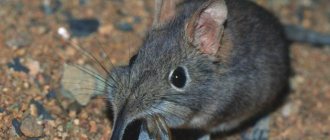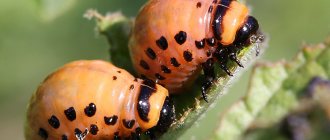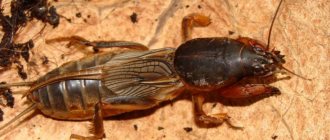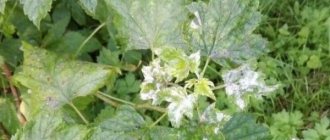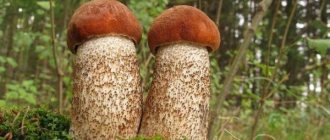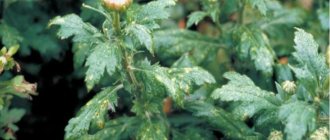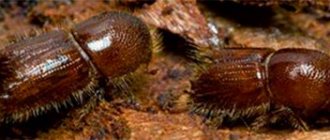- Wild animals
- >>
- Mammals
The shrew should not be confused with an ordinary mouse, because it is not a rodent at all, but belongs to the class of mammals. Perhaps this is the smallest representative of this class. The shrew is a destroyer of hordes of all kinds of insects. The little animal has a very funny appearance, thanks to the proboscis on its face, looking at which you involuntarily smile.
Origin of the species and description
Photo: Shrew
The shrew is a mammal and belongs to the order of insectivores. This is the smallest predator from the shrew family. In appearance, the shrew is very similar to an ordinary vole mouse, but it is distinguished by the perky and peculiar proboscis on its face. The shrew family includes three hundred varieties of these unusual animals, united into two subfamilies:
- Shrews (have brown tooth enamel);
- Shrews (animals with white tooth enamel).
There are 21 species of shrews in our country alone. People have long noticed their harsh and aggressive disposition, so they nicknamed them “little devils.” If you go deeper into history, back in the seventeenth century, the scientist and zoologist Topsel described this animal as a predatory and ferocious animal that bites very hard, and every bite can be fatal. Let us describe in more detail some varieties of shrews.
The tiny shrew is the smallest mammal on Earth, its body length is from 3 to 5 cm. The animal is named because of the color of the tooth enamel, which prevents the rapid grinding of teeth. The color of the animal's fur is also brownish.
The shrew (dwarf shrew) is slightly larger than the previous one, its body length is about 7 cm. The color of its tooth enamel, as the name implies, is white. Meeting this animal is very rare; the color of the coat of this shrew species is gray.
The giant shrew is the largest representative of its family, the length of its body is about 15 cm, and its tail is 10 cm. The color of its coat can be either light gray or completely black.
Common shrews (water shrews) love the shores of freshwater bodies of water. A distinctive feature of such shrews is the coarse hairs on their limbs, which make them comfortable to move in the water. In addition, the fur coat of this animal is waterproof, it has a grayish tint, and on the abdomen it is of a lighter tone. In appearance, this shrew is very similar to a water rat.
Video: Shrew
Mouse-like shrews are active at any time of the day. Their fur is soft and silky. The color of their fur can be grayish, yellowish, brownish-brown and even black, their body is from 6 to 11 cm long, and their weight is only about 23 g.
American shrews are quite large compared to other shrews, have a short tail and powerful limbs. These animals are poisonous and have dark fur.
Forest shrews are small in size, but their fur is very pleasant, long and beautiful. Its shade is predominantly gray. The body length of this variety is no more than 10 cm, and the weight is from 3 to 12 g.
The Ugandan armored shrew has a unique skeleton in its structure. The length of its body can reach up to 15 cm, and the animal weighs 110 grams. The coat is rough, but quite thick, the color of the fur is gray.
Interesting fact: thanks to the amazing structure of the armored shrew's skeleton, the animal can overcome enormous loads on its body, which are a thousand times greater than the weight of the shrew itself.
Appearance and features
Photo: Shrew on the site
Despite the fact that there are a considerable number of varieties of shrews, and they all have their own specific features, there are still common characteristics of appearance inherent in the shrew family. In relation to the body, the animal’s head is quite large, the muzzle is elongated and pointed, and the nose turns into a small proboscis that is mobile.
The animal's paws are short and have five toes. The fur cover is thick and velvety. The length of the tail varies among different species; in some it is very short, in others it is longer than the entire body. The skull has a narrow and elongated shape, which is pointed closer to the nose. A unique feature of the shrew is the size of its brain; it is one tenth of the weight of the entire animal, which is much larger than that of humans and dolphins.
As such, there are no cheekbones in shrews, and the number of teeth varies from 26 to 32. Permanent teeth replace milk teeth at the embryonic stage, so newborn shrews are born with teeth. The longer incisors are located in front, especially the lower ones. Around the anal and genital openings there is something like a roll of leather. On the sides at the base of the tail there are glands that emit a specific foul odor.
Interesting fact: female shrews have from 6 to 10 nipples, and the males' seminal glands are located inside the body. Males have a fairly impressive genital organ, the length of which reaches seventy percent of the length of the entire body.
The shrew has a very fast heartbeat, at rest it is up to 700 beats per minute, and in a state of fear it can reach up to 1200 beats. In general, scientists have noticed that these creatures are very unbalanced and nervous, so they can die even from a loud thunderclap.
Where does the shrew live?
Photo: Animal shrew
Various species of shrews have settled throughout our planet. They live almost everywhere, they can not be found only on the Australian continent, in the polar regions, New Zealand and New Guinea, as well as in parts of South America, which are south of countries such as Venezuela, Ecuador and Colombia.
These insectivorous creatures adapt to life in various territories:
- On flat areas;
- In mountain ranges (up to 4 km altitude);
- In deserts and semi-deserts;
- In tropical rainforests;
- In wetlands.
Each animal has its own domain, the territory of which it vigilantly guards to avoid encroachment by uninvited guests. If someone has invaded the shrew’s allotment, then a struggle for the hunting area begins, the outcome of which can be fatal for one of the rivals. Shrews enter into fights not only with their own kind, but also with mice and lizards.
Burrows serve as a refuge and home for shrews, but they themselves dig them infrequently, but try to occupy someone else’s hole left by someone else. If they have to dig their own shelter, they make it shallow.
Insectivorous creatures love the hollows of rotten trees, where they also set up their homes. In their dens, shrews make soft and comfortable bedding from last year's leaves. We can say with confidence that shrews are sedentary animals that adhere to a certain territory throughout their short lives.
Preventing the appearance of underground pests on the site
In order to avoid possible problems associated with the appearance of shrews, it is recommended to apply various preventive measures in advance.
Mesh under lawn grass
The mesh will prevent the formation of slides from minks
Before sowing lawn grass or laying ready-made green rolls, a fine metal mesh should be laid in the bottom layer. In this case, even if an uninvited guest appears on the site, he will not be able to get out, thereby not spoiling the beautiful appearance of the flat clearing.
Digging in slate and roofing felt
Experienced farmers dig in slate, roofing felt or other similar materials around their vegetable gardens. The depth of the underground part of the fence must be at least one meter. Otherwise, such a barrier will not be effective.
Repellent plants
There are a number of plants that have an odor that is unacceptable for the life of underground animals
Shrews choose comfortable, well-moistened areas to live. At the same time, they have a good sense of smell. There are a number of plants that have an odor that is unacceptable for the life of underground animals. By planting these flowers or vegetables along the edges of your garden or flower bed, you increase the chances that mammals will avoid your area. These include:
- Onion and garlic;
- All types of legumes;
- Mint and wormwood;
- Daffodils;
- The imperial hazel grouse has a pungent smell from its root system, reminiscent of the smell of a fox, a famous hunter of burrowing animals. Sensing the approach of the enemy, shrews will leave this place as far as possible;
- Siberian scilla, castor bean and others.
There are many ways to combat shrews. Not all of them are universal. Each specific case has its own method. Through experience, the owner of a personal plot determines what is acceptable for him. Rural residents most often use reliable methods in which animals die. People who are far from such drastic measures are trying to get rid of uninvited guests using more humane methods. Children often have great fun playing with shrews. This should be strictly avoided - mammals are carriers of many dangerous diseases.
- Author: VasilievaM
Rate this article:
- 5
- 4
- 3
- 2
- 1
(17 votes, average: 3.1 out of 5)
Share with your friends!
What does a shrew eat?
Photo: Mouse shrew
The shrew spends almost its entire life searching for food, because to maintain the required body temperature and replenish all energy costs, they need a lot of food.
Interesting fact: during the day, the shrew consumes a large amount of food, the weight of which is almost twice the weight of the animal itself.
The diet of these miniature predators consists almost entirely of insects. The shrew menu consists of:
- Slugs;
- Medvedok;
- Listoyedov;
- Spiders;
- Snails;
- Caterpillars;
- Woodlice;
- All kinds of larvae;
- Earthworms;
- May beetles.
The shrew can also attack lizards, small mice, and frogs. Water shrews happily eat small fish and amphibians. The hardest time for these small animals is in the harsh winter, when the ground freezes and it is very difficult to dig out anything from under the snow. In winter, shrews can also eat seeds of various plants, but rare specimens survive until spring.
A keen sense of smell and excellent sense of touch help the animals search for food. There is no division into the day of shrews into night and daytime; they are divided into periods of hunting and sleeping. The gluttony of animals, of course, is amazing, but their life depends on it, because the metabolism of these little ones is very intense.
Interesting fact: shrews will not last long without food; in the summer they can go without food for about 10 hours, and in the winter - only 3. After this time, the animal dies if it is not refreshed. This is how interesting their body is.
Features of character and lifestyle
Photo: Garden shrew
Even today, little is known about the habits and behavior of shrews, because they have not been sufficiently studied, because they lead a mainly twilight lifestyle and are almost all the time in the bowels of the earth. Males and females are practically indistinguishable in appearance.
By nature, these animals are loners, each of them has their own land, which they carefully protect from strangers. A shrew can fiercely fight for its allotment of land against uninvited guests; it is not afraid to attack larger mice and lizards. Her temperament is very aggressive and hot-tempered.
On the other hand, this animal is very unbalanced and timid, the shrew’s nerves are not right; it can literally be scared to death even by a thunderstorm. Hibernation is unusual for these animals, but when there is little food, the shrew falls into a kind of short-term torpor, and its body temperature drops sharply at this moment.
Short-tailed shrews, which are registered in Canada and the USA, and water shrews, which live in our country along the banks of reservoirs, are poisonous animals, the bite of which is very painful even for humans and causes swelling of the bitten area, and for many small animals such a bite is simply fatal.
As for the life expectancy of a shrew, it is very short-lived and is only about one and a half years. It has been observed that females live a month longer than males. This is the interesting and dual nature of shrews: on the one hand, they are very nervous and timid, and on the other, they are aggressive and unpredictable.
Animal habitats
Shrews are distributed everywhere, with the exception of polar territories. Most often they can be found in the countries of Asia, Europe, Africa, North America, and Russia. They prefer to live mainly in moist soil near ponds and swamps. They often settle in tree hollows, rotten stumps, and fallen leaves. Sometimes shrews inhabit mole holes.
The animals rarely change their place of residence, preferring to explore an area of several tens of square meters. Most often, their home becomes a summer cottage or garden. Digging holes in search of insects, a shrew can dig up an entire garden of several hundred square meters in one day.
Interesting!
In the event of an uninvited invader of the territory, shrews can defend their territory and fight the opponent to the death.
No more than two adult individuals live on one plot of land of several hundred square meters. Shrews do not like to migrate of their own free will; they stick to one territory throughout their lives. The exception is their forced removal by humans. After a thorough examination of a piece of land, the animal moves to the neighboring territory until new insects appear on the old one.
Social structure and reproduction
Photo: Baby shrew
As already mentioned, shrews prefer a solitary existence in their own isolated territory. These animals reproduce from one to three times a year. Gestation lasts 2-3 weeks. A litter can have from 4 to 14 babies, who are born blind and hairless.
The proboscis of newborns is poorly developed, so the babies look slightly snub-nosed. In a favorable period during the summer season, one female can raise about forty children, and some young animals manage to have their own offspring in the same summer.
Interesting fact: both parents build a nest for future offspring, although scientists have not yet established whether shrews are monogamous or polygamous.
On a soft bedding of dry leaves, babies grow and become stronger very quickly, and within a month they become completely independent. It is interesting to watch how a shrew and its offspring move in single file, holding each other’s tails with their teeth. From a distance it resembles a train, where each of the children acts as a trailer. If, after all, the cub manages to get lost, then he announces this with his squeak, the mother stops the “train” and looks for the loss, then the movement of the locomotive resumes.
It is worth mentioning the extraordinary ability of shrews, called the “Denel phenomenon”, it is characterized by a decrease in body size with the onset of autumn cold, the skull becomes flatter. In April its size increases again. This is how much unusual lies in the short life of such a miniature creature as a shrew.
Natural enemies of shrews
Photo: Great Shrew
Shrews' small size makes them vulnerable to many larger animals. They often become victims of both nocturnal and daytime birds of prey. Weasels, ferrets and other small predatory animals can feed on shrews. They often become victims of attacks by foxes and ordinary cats and dogs.
These animals confuse shrews with mice, but, having taken such prey into their mouths, they immediately feel their mistake and often refuse such a snack. It's all about the fetid musky aroma that insectivores emit; because of it, many predators eat shrews very reluctantly and only when there are no other options for food.
One of the enemies of shrews is a person who destroys these animals, considering them pests of fields, gardens and vegetable gardens. Of course, the shrew is capable of damaging the root system of cultivated plants in pursuit of any insects, but it also brings great benefits to the land. With its proboscis, the animal skillfully loosens the soil, which is saturated with oxygen, while at the same time the shrew destroys entire hordes of harmful insects and their larvae.
Interesting fact: shrews destroy a large number of insect pests, even in places where birds cannot reach them.
Unfortunately, people see only harm in the activities of shrews, although this is not at all the case. Among other things, many shrews die during the difficult winter period due to lack of food, rarely surviving until warmer times.
Ways to fight
For prevention, nets with small cells are installed around the perimeter of the site. The foundation is buried at least one and a half meters. You can regularly dig up the garden to a depth of 25 cm to destroy holes and labyrinths. Some also lay a fine metal mesh under the lawn.
If the shrews are already infested and you need to get rid of them, they use several types of methods.
Physical
This category includes all methods directly related to shrews:
- Catching with cats and dogs . Almost no domestic animal will eat the animal, but will chase it for the thrill of the hunt with great pleasure and may accidentally strangle it. Night hunts force mammals to change their location;
- use of traps and snares . Rat and mouse are quite suitable. Bugs, larvae, and earthworms serve as bait. There are traps that are placed in holes, such as the SuperCat Vole Trap. After capture, the animals are killed or released away from the site;
- flooding and poisoning of burrows . Water is poured into the tunnels and poisonous gas is released.
In addition, as for prevention, they arrange a global digging of the earth with the destruction of labyrinths.
All these options can deprive animals of their home and force them to leave. But there is absolutely no guarantee of no return.
Repellent
A humane way to force shrews to make space. However, a stubborn beast can fight until victory or return later when everything calms down.
Applicable:
- sound repellent . Ultrasonic devices with special sound frequencies and homemade “noise makers” are used. Ultrasound cannot be heard by pets or people. But rodents and shrews hear. Small elements are placed directly on the plots. Among the best are Antikrot, GRAD and Tornado 03B. The radius of operation is up to 20 m. Tin and glass jars with attached sticks act as homemade repellers. The jars are buried in the ground, the sticks are hung so that they knock on the walls when the wind blows;
- repelling by the smell of plants . Shrews do not tolerate strong aromas. In the garden it helps to make plots of mint, onions, marigolds, garlic, beans, wormwood and other plants with a persistent odor;
- scaring off with folk remedies . Savvy gardeners throw rags with kerosene and gasoline into the holes, “fertilize” the labyrinths with rotten fish, birch tar, moss and burnt rubber (they put a smoking piece in the hole).
Such methods should be repeated several times. Care must be taken with odorous products around pets. Among other things, a strong smell may not be the most pleasant for a person.
When using strong-smelling substances, you must use a mask or respirator.
Chemicals
The most cruel and radical method of eliminating shrews. Experienced summer residents do not recommend resorting to it unless absolutely necessary. Exceptions are considered to be when the activity of an insectivore begins to actively interfere with the growth of crops.
A large number of standards can really slow down the growth of vegetables, grains and flowers. Root vegetables and berries often completely fall underground. The abundance of gnawed roots is also not conducive to obtaining a good harvest. If such a disaster occurs, chemicals are used.
Expert opinion
Mityuk Stefania Pavlovna
When using chemicals, precautions must be taken. Processing should be carried out in the absence of children and animals. Protective clothing, mask and gloves will be required. In case of contact with eyes or skin, consult a doctor.
The drugs are aimed at poisoning and paralysis of the nervous and respiratory systems. Shrews simply become immobilized and die from oxygen starvation.
The list of leading chemicals includes the following items:
| Name | Peculiarities | Mode of application | approximate cost |
| Thick substance resembling dough. They are eaten by animals. Death occurs on days 4-6. | Placed in containers near habitats. 1 packet for every 20 m or less (depending on rodent population) | 100 rub. for 200 g | |
| Dollets. Red granules. The animals eat the product instead of food. Death occurs within 7 days. Mortality rate 100%. | Consumption 1 kg per 1 ha. They fall asleep in holes. | 950 rub. for 3 kg | |
| Causes painful death from internal bleeding. Valid in 4-8 days. The packaging indicates safety for humans, pets, livestock, bees and birds. | They fall asleep in holes. 1 package is distributed to a plot of up to 10 acres. Sufficient quantity for shrews and small mice. | 40 rub. per 100 g | |
| Solution. Complete death on days 4-14. Works for acute food poisoning. Can be used in greenhouses and indoors. | Mix with bait (bugs, worms, dead larvae). Place it near the holes. 1 part liquid to 49 parts food. | 750 rub. for 1 l | |
| Concentrated solution with low consumption. Lay out for every 15 m of space. Also effective against mice and rats. | Mix with bait. 20 g of concentrate per 1 kg of food. | 1500 rub. for 1 l |
After chemical treatment, dead shrews must be collected and burned.
Shrews are not the worst pests for a garden or area near a house. They do a lot of useful work instead of humans. If they are present, you can practically not worry about insect pests. At the same time, animals are capable of destroying lawns, damaging plant roots and preventing them from growing.
You should not get rid of a shrew without good reason. You especially shouldn’t resort to strong poisons right away. To begin with, it is recommended to try humane methods of disposal, try to drive away with sound or smell, destroy homes and labyrinths.
Repellers can be bought in stores or made independently from available materials. The method is not only as gentle as possible, but also costs less than chemicals.
To drive away or not to drive away? Each gardener will have to decide for himself.
Shrew tablets
If you decide to fight shrews in your garden using chemicals, then stock up on tablets such as “Antikrot”, “Rat Death” or “Nutcracker”. These chemicals will deal a devastating blow to the shrew and it will die. Leave the tablets near the shrew's holes and when she comes out to eat, an unpleasant surprise will be waiting for her.
Make sure that the tablets are not spread throughout your area where they can be eaten by pets. For them, this type of tablet is as dangerous as for the shrew. You should also make sure that particles of the tablets do not get on the crop, because eating vegetables and fruits with these chemicals is also harmful for you.
Traps for shrews
Method number 1 . To catch a shrew in a trap, you can take an ordinary mousetrap, put in what this pest feeds on and place it at the entrance to the shrew's burrow. As soon as she smells a worm or bug, she will come out for a meal and then the mousetrap will work. In this case, the shrew will not get away from you.
Method number 2 . As a more humane way to combat shrews, you can use an ordinary pipe trap. In order to use this method of getting rid of an annoying pest, you must first find the entrance to its burrow. The pipe at both ends must have a flap door that opens only to the entrance. You insert the pipe directly into the entrance to the hole and wait. The shrew will pass through the gate, but will not come back out.
As we said before, work with the shrew carefully. If you caught it using a pipe trap, then you should remove the shrew with gloves on your hands. You don’t have to remove the shrew from the pipe yourself at all, just throw away the pipe along with the caught pest if you yourself are afraid to remove the shrew from there.
Now you know what a shrew looks like, what harm it can cause to the garden, and what methods exist to effectively combat this mammal.
How to deal with shrews using folk remedies
People go to various lengths to drive this voracious guest out of their area. Some methods are quite original and, at first glance, raise doubts about their effectiveness. However, it is not for nothing that gardeners advise each other certain techniques that have been known for decades. As practice shows, they really work; I’ll give a few examples here.
Shrew - control methods:
- As mentioned above, this animal has an enviable sense of smell. If you find an animal's burrow, try to bury fish heads or entrails that were removed when cleaning the fish right there (during the move). After a short time, the smell of decomposition will drive the shrew out of the area. This method is also good in the fight against moles and mole rats.
- If you have a vigilant cat, then he can also become a good assistant in the fight against pests. The small animal really looks like a mouse and will cause a completely expected reaction in a hunting cat. According to reviews from summer residents, cats cope well with this mission, although they do not eat the prey afterwards. The reason for this is the characteristic odor released by the musk glands of the shrew.
- Water from a hose, which is poured into the detected pest passages. Sometimes quite a few liters of water may be needed, but this is an old proven method that allows you to “pour” a shrew out of its shelter.
- Tortokhtushki or windmills - iron rods are driven into the ground, to which empty cans or empty plastic bottles are tied. When the wind blows, they move and make quite a loud noise. There is vibration from the rod, and shrews do not like this, loud noise is the same.
Shrew, photo:
You can also combine business with pleasure and plant Chernobrivtsi (marigolds), wren lily, peas or beans - the animal really does not like the smell of these plants. According to experienced gardeners, no traces of pest activity were found within a radius of 3 meters near a lily or marigold bush. There are good reviews about the imperial hazel grouse plant; the shrew also does not like its aroma.
Of course, modern chemical and mechanical pest control methods may be more effective, but time-tested methods will also serve you well. Choose the method that suits you best.
Advice: although the animal looks pretty cute, it’s better not to pick it up. If you remove a shrew from a live trap, first put on gardening or construction gloves. Her bite is very painful, and it costs her nothing to bite someone who has caught her!
Now you know who the shrew is, a photo and description, how to fight it, what drugs to use and how to protect your area.
Population and species status
Photo: Shrew animal
As was said, shrews are widespread almost throughout the globe, with the exception of some areas, but the state of their population is quite ambiguous, it all depends on one or another variety of this animal. The population size of many shrews is stable and not subject to any threats, and some species are considered endangered and are listed in the Red Book.
If we talk about the shrew family as a whole, then only some species are considered endangered, and the numbers of other species do not cause any concern. We should not forget that these interesting insectivores have about three hundred varieties, so they are quite numerous and widely distributed across various continents, countries, regions and regions.
Video
Experienced gardeners share educational information about the life activity of shrews and ways to repel these insectivores in the following videos:
Sources
- https://poklopu.ru/drugie-vrediteli/zemlerojka.html
- https://moypitomec.ru/dikie-zhivotnye/mlekopetayushhie/zemlerojka-foto-i-opisanie.html
- https://ogorodum.ru/kak-izbavitsja-ot-zemleroek-na-uchastke-samyj-jeffektivnyj-sposob.html
- https://luckclub.ru/pro-zemlerojku-kak-borotsya-s-zemlerojkami-na-sadovom-uchastke
- https://wildfauna.ru/zemlerojka
- https://urozhajnayagryadka.ru/kto-takaya-zemlerojka-i-kak-s-nej-borot-sya-na-ogorode/
- https://prusakam.net/zemlerojka/
- https://www.ivd.ru/stroitelstvo-i-remont/dacnyj-ucastok/kak-borotsya-s-zemlerojkoj-na-dachnom-uchastke-10-sposobov-59531
